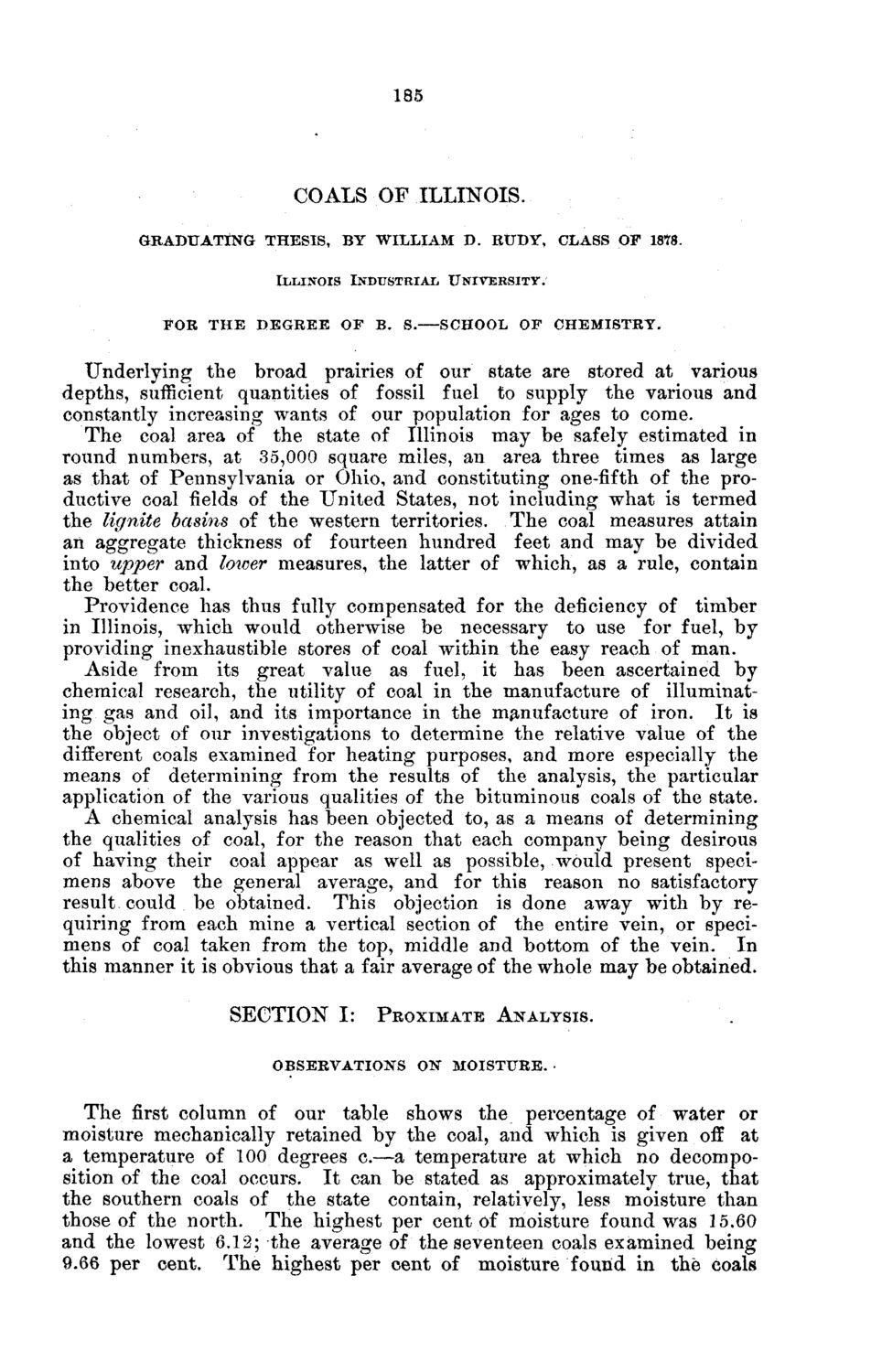| |
| |
Caption: Board of Trustees Minutes - 1878
This is a reduced-resolution page image for fast online browsing.

EXTRACTED TEXT FROM PAGE:
185 COALS O F I L L I N O I S . GRADUATING THESIS, BY WILLIAM D . RUDY, CLASS OF 1818. ILLINOIS INDUSTRIAL UNIVERSITY. FOR T H E D E G R E E O F B . S. SCHOOL OF CHEMISTRY. Underlying the broad prairies of our state are stored at various depths, sufficient quantities of fossil fuel to supply the various and constantly increasing wants of our population for ages to come. The coal area of the state of Illinois may be safely estimated in round numbers, at 35,000 square miles, an area three times as large as that of Pennsylvania or Ohio, and constituting one-fifth of the productive coal fields of the United States, not including what is termed the lignite basins of the western territories. T h e coal measures attain an aggregate thickness of fourteen hundred feet and may be divided into upper and lower measures, the latter of which, as a rule, contain the better coal. Providence has thus fully compensated for the deficiency of timber in Illinois, which would otherwise be necessary to use for fuel, by providing inexhaustible stores of coal within the easy reach of man. Aside from its great value as fuel, it has been ascertained by chemical research, the utility of coal in the manufacture of illuminating gas and oil, and its importance in the manufacture of iron. I t is the object of our investigations to determine the relative value of the different coals examined for heating purposes, and more especially the means of determining from the results of the analysis, the particular application of the various qualities of the bituminous coals of the state. A chemical analysis has been objected to, as a means of determining the qualities of coal, for the reason that each company being desirous of having their coal appear as well as possible, would present specimens above the general average, and for this reason no satisfactory result could be obtained. This objection is done away with by requiring from each mine a vertical section of the entire vein, or specimens of coal taken from the top, middle and bottom of the vein. In this manner it is obvious that a fair average of the whole may be obtained. SECTION I: PROXIMATE A N A L Y S I S . OBSERVATIONS ON MOISTURE. • The first column of our table shows the percentage of water or moisture mechanically retained by the coal, and which is given off at a temperature of 100 degrees c.—a temperature at which no decomposition of the coal occurs. I t can be stated as approximately true, that the southern coals of the state contain, relatively, less moisture than those of the north. The highest per cent of moisture found was 15.60 and the lowest 6.12; the average of the seventeen coals examined being 9.66 per cent. T h e highest per cent of moisture found in the coals
| |